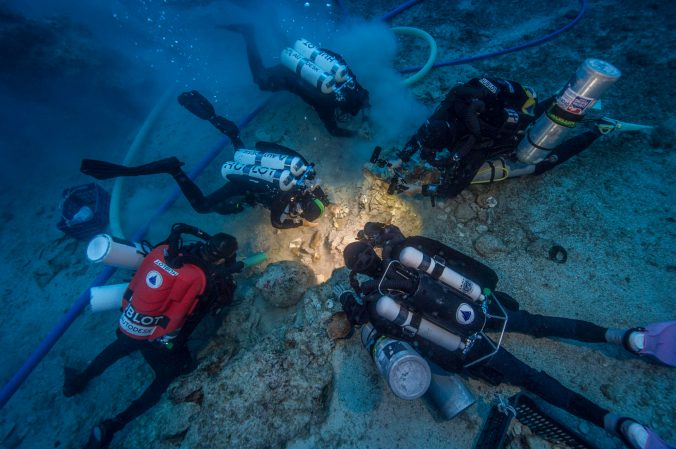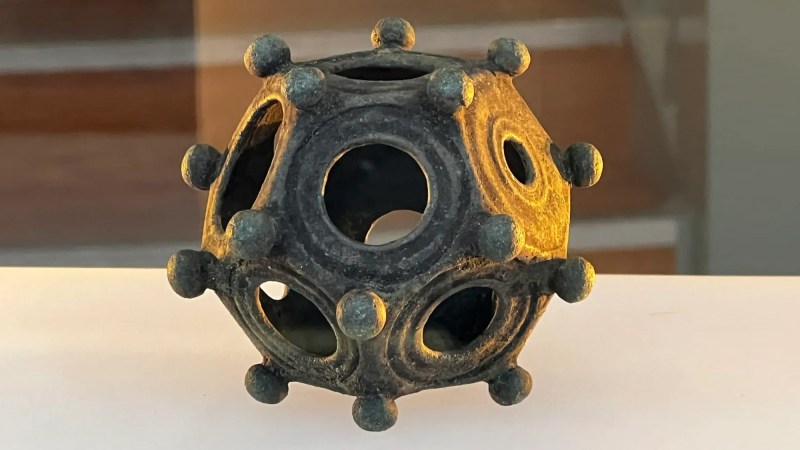

With a direct hit by Category 4 Hurricane Ian in September and two unusual late-season storms, the state of Florida saw an active hurricane season this year. Severe beach erosion from the last two storms helped uncover what is likely a wooden ship that dates back to the 1800s in Daytona Beach Shores. It’s possible that the ship was buried on the eastern coast of Florida two centuries ago, and remained hidden despite all of the activity on the sand above.
The structure is between 60 and 100 feet long and was found sticking out of the sand over Thanksgiving weekend, near homes that had collapsed during November’s Hurricane Nicole.
“Whenever you find a shipwreck on the beach it’s really an amazing occurrence. There’s this mystery, you know. It’s not there one day, and it’s there the next day, so it really captivates the imagination,” maritime archaeologist Chuck Meide told the AP. Meide led a team of archaeologists from St. Augustine, Florida to examine the ship. Meide is St. Augustine Lighthouse & Museum’s director research.
[Related: Historic drought brings eerie objects and seawater to the surface of the Mississippi River.]
Meide strongly believes that the structure is a shipwreck due to how it is constructed and the materials, such as iron bolts, found on it. “It’s a rare experience, but it’s not unique, and it seems with climate change and more intense hurricane seasons, it’s happening more frequently,” Meide said, referencing the shipwreck.
Earlier this week, the team removed the sand and dug a shallow trench around the wooden timbers, made sketches, and took measurements in an effort to help crack the 200-year-old case.
When more of the structure was exposed, the team used their hands to keep digging to prevent damage to the wood. The process will take longer, but is safer than using shovels, according to Arielle Cathers, one of the team members working on the dig.
After the initial discovery of the ship about two weeks ago, some of the ships timbers were reburied by the waves and sand. The team doesn’t intend to intend to uncover the whole length of the ship, but merely enough to measure it, draw it and possibly take some wood samples to test for its origins.
Currently, there are no plans to removed the ship from the beach, due to being well protected in the packed, wet sand and a price tag in the millions of dollars.
[Related: Dead ships find solace under the treacherous surface of the Great Lakes.]
Hurricanes are not the only weather phenomenon that have been revealing buried relics of the past. In October, drought on the Mississippi River exposed a similar shipwreck find. Baton Rouge, Lousiana resident Patrick Ford found the shipwrecked remains of the Brookhill, a trading vessel dating back to the early 20th Century. “I immediately texted friends and was like, ‘holy moly, I think I found a ship, a sunken ship!’” Ford told WBRZ, the city’s ABC News affiliate.
Lousiana state archaeologist Chip McGimsey said that they’ve known about the Brookhill for quite some time. “We believe this is a ship that was manufactured in 1896 in Indiana for trade here,” McGimsey explained to WBRZ. This ship along with its sister ship the Istrouma faced destruction. “On September 29th of 1915, there was a big storm… both ships sank.”
It’s also not unusual for items to become uncovered or wash up on shore after storms. In Martin County, Florida (about 160 miles south of Volusia County), Hurricane Nicole’s wind and waves uncovered the skeletal remains of six people from what scientists believe to be a Native American burial ground.















